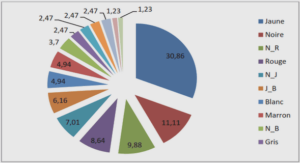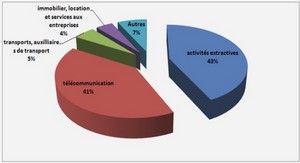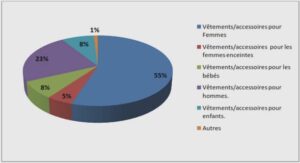Mémoire online inefficient Job Destructions and Training with Holdup, tutoriel & rapport PDF.
Chapter 1 Returns to firm-provided training in France: Evidence on mobility and wages
While numerous studies have provided selectivity-corrected estimates of the wage returns on training both in the US and in European countries, less is known about the impact of training on mobility on the labor market. In this paper, we estimate the impact of firm-provided training on both employment-unemployment and job-to-job transitions using French panel data covering the 1998-2000 period. We find that participating to a training session in 1998 reduces the probability to experience an employment-unemployment transition during the period and that the probability to change firms is higher among untrained workers. Additional results about the effect of training on wages indicate that training participation in 1998 increases wages by 7% in 2000 but the wage premium remains flat along the wage distribution.
JEL Classification: C14, J24 Keywords: Returns on training, labor market mobility, Propensity score matching
Introduction
The European Heads of Government in the Lisbon Summit at the beginning of the new millennium strongly committed to make Europe by 2010 as “the most competitive and dynamic knowledge-based economy in the world”. The development of high quality vocational training in Europe is a crucial part of this strategy, especially in order to improve and to adapt existing skills to the changes of technology and to promote employability2. Firms have a key role in this training investment process since they are the most important provider of on-the-job training. For instance, in France, which is the country under consideration in this paper, training periods were funded by firms in about 86% of cases in 1999 and around three-quarters of the training programs were reported to be at least partially initiated by firms.
Estimating wage returns to training leads to well-known measurement and estimation issues.
The main problem concerns the recovery of a causal effect of training on wages net of selectivity bias, since training is very unlikely to be exogenous. Estimated returns to private-sector training may pick up returns from unobservable characteristics. Leuven and Oosterbeek (2008) find that the returns to training tend to drop to zero when comparing workers participating in training and workers who wanted to participate in training, but did not do so because of random events.
While most of empirical studies focus on the impact of training on wages, very few studies are interested in evaluating the training effect on workers’ mobility. This is really surprising as firms should have stronger incentives to invest in the training of their employees when the latter have no expectations to quit their current job. From a theoretical viewpoint, it is worth noticing that the impact of training on mobility is not necessarily obvious. Considering the transition from a job to another one (i.e. a change of firms), participating in a training program may have two offsetting effects. On one hand, if there are significant wage returns to training, this should reduce the probability for participants to search for new jobs. On the other hand, trained workers could also choose to behave in an opportunistic way by moving to another firm in order to receive a higher paying job with increased responsibilities3. These two offsetting effects depend crucially on whether the training is general or specific. In this sense and according to the hu-man capital theory (Becker (1964)) -that draws a crucial distinction between general and specific skills- the worker’s post training outside option is considerably reduced if the training is specific, so that workers with specific skills are not actually in a position to behave in an opportunist way. However, this analysis first rests on the assumption of perfectly competitive labor markets, in which workers receive their marginal product. Due to search frictions (that rise the cost of turnover) or information asymmetries (the training firm is better informed about the training of its employees than outside employers) or else institutions, labor markets are actually imperfect.
Therefore, training firms have a monopsony power and are able to capture some of the returns to training. This gives them strong incentives to finance general training. Secondly, most skills may be industry specific but also general because typically there are many firms in the same industry using similar technologies (Acemoglu and Pischke (999a)). Accordingly, even if skills are specific, trained workers are to some extent in a position to behave in an opportunist way.
Recent developments in the training literature focus on all these strategic interactions between employers and employees (Acemoglu and Pischke (1998), Acemoglu and Pischke (999b)).
………






